At Home and In Paris?
- Judith Mitrani
- Sep 4, 2024
- 17 min read
Updated: Sep 25, 2024
I Escaped The Olympic Crush by Hitting Iceland

Each year, we try to escape the heat and the crowds of tourists in Paris for at least three weeks in the summertime. But unlike most Parisians, we always head north in the Summer. Last summer, you’ll remember we were as far north as the North West Coast of Brittany. And before Covid smacked us in the face, we traveled up the coastline of Norway beyond the Arctic Circle. This time, we decided to take a three-week trip to Iceland. We were confident that we had made the right decision regarding the dates: flying out the day before and returning the day after the Paris Olympics. Our "hood" on the right bank of the Seine had been invaded and obstructed for three months before the events even began, and our route from our apartment and anything on the left bank was rendered impassible, even on foot. Only the Metro transported Parisians freely, but this was not a solution for my difficulty navigating stairs. So, on July 25th, we left Paris like rats from a sinking ship.

If you who know Paris find this area unrecognizable as the area from the l'Eglise de la Madeleine,

South on the rue Royale, throughout the Place de la Concorde between the Gardens of the Tuileries and the entrance to The Champs Elysee, and continuing South across the river to the National Assembly on the Left bank, you are not alone. The sight from the ground was despicable, ugly, and sad, but the media and participants experienced this as heaven. Mon Dieu! From the air, Iceland was spectacular as we descended through the clouds.

The Icelanders do not say ‘visit Iceland.’ Instead, they say, “Hit Iceland.” It felt like we hit upon something incredibly unique and utterly unexpected. It wasn’t as if we hadn’t heard that Iceland was a stunning place to visit. Everyone we knew had been there and loved it, but nobody told us exactly what to expect. I’m glad they didn’t because there was a surprise around every corner. We had almost canceled the trip several times after booking it over a year ago because of the volcanic eruptions, bubbling up magma from time to time, and over 1,000 small earthquakes that had the experts certain that this fissure was just about ready to get serious. They had three minor eruptions, with magma bubbling up that threatened one town and the famous Blue Lagoon, which had been evacuated twice before we arrived. The big thing about this volcano is that it lies right between Keflavik Int’l airport and the capital, Reykjavík. Most of us in Europe remember the last

time a volcano erupted in Iceland about a dozen years ago, and it was terrifying as it disrupted air traffic throughout Europe and the East Coast of the United States and Canada for approximately ten days. That’s what we had in mind. when we considered not going this year since we had fresh in our minds the memories of being in Berlin at one of our Int’l Frances Tustin Memorial Trust conferences. Our contingent from Australia was particularly affected, unable to get home to their families and patients for over ten days after the end of the conference. Luckily, we had already purchased our train tickets to Amsterdam for a speaking holiday to follow the conference while other people were scrambling to get what was left of any train tickets in Europe in an attempt to find a place where they might take off to get home, even to get
home by train if they lived in Europe. With that disaster in our minds, we couldn’t help but be concerned that we would be stuck between the airport and Reykjavík, the Capitol Cityfrom which

all of our activities would commence, or worse yet to be stuck in Reykjavík and unable to get home to Paris. Over a year before, we had arranged to have the first week on land in a beefed-up 4 x 4 with an expert guide. Einar Páll Svavarsson was born and lived in Iceland but had spent several years in the

States. However, he had returned and had spent most of his life in Iceland. Einar had also been an expert nature photographer in Iceland. We visited his website and saw the many wonderful images




that he had captured, that we trusted him to show us the best, even with our time and physical limitations. After that first week with Einar, we had one day free to visit the museums and the fantastic Calvinist church that was an architectural copy of some of the most iconic basalt pillars on
the black sand coast in Southwestern Iceland that we were to visit on our land journey with Einar.




Trying to describe Iceland is quite a feat. If it were a motion picture, it would be something like


"Journey to the Center of the Earth" meets "Lord of the Rings" meets "First Man." There were great stretches of lava ranging from recent black lava beds to those thousands of years old, with giant boulders on either side of the highway as far as the eye could see. There were rock formations of

every kind and color, lakes situated in the craters of smaller volcanoes that had blown their tops thousands of years ago, and the giant lake that stretched almost the entire island's width. There

were cliffs inhabited by adorable puffins, some of which made landings right in front of us on the grassy edge of the cliff, practically at our feet.?One fellow stuck around and seemed to pose for our cameras, turning in all directions so we could see his best sides. He ‘visited’ with us for over 20 minutes. On one day-trip, we walked alongside a wall made up of basalt columns created by Mother Nature, not humankind.

Some even more iconic columns that we saw towering above the beach from the water formed an entrance to a cave seen from land. You might dare to explore its inner mysteries if you are fit enough to wade through
The black sand beaches were deceptively solid but soft and deep like quicksand until recently, when they were soaked with ocean water just before the high tide receded. If one were serious about walking these beaches, you'd have to be meticulous about checking the timing of the tide. The North Atlantic is treacherously unpredictable and wild, even at low tide, as demonstrated by some tourists who had tiptoed to the edge only to realize that an enormous wave was suddenly rushing toward them and came crashing down unexpectedly on the spot that they had inhabited just before running for their lives! There were many places, at the end of a long ride through the lava fields, where there were so many waterfalls I could hardly take photos of all of
them. They often. Las Cataratas, better known as Iguazú Falls, which makes up the largest waterfall system in the world. The falls divide the Iguazu River into the upper and lower Iguazu. The Iguazu River flows through Brazil; however, most of these falls are on the Argentine side. Below its confluence with the San Antonio River, the Iguazu River forms the border between two South American giants at an enormous drop-off called the Devil’s Mouth, which puts

Niagara Falls to shame. The Falls in Iceland are not so close together as in Iguazú, which form a ring around an enormous rift between tectonic plates that had shifted millions of years ago. There is
nothing quite so dramatic as that in Iceland, but there is one place where you can walk between the sides of what had long ago been formed by a great rift that pulled apart the volcanic land, and that continues to be parted, inch by inch, each year.
This great rift that goes on for miles can be walked as no waterfalls exist there. But there are many, many, countless waterfalls everywhere on the island. At the site of one of these great falls, there’s a path for visitors to walk up the moss-covered mountain,


and pass behind the falls, if they dare. In one spot, we were treated to the sight of two enormous waterfalls that seemed to be holding hands as they spilled over the mountainous region of the older volcanic rock that supports them and is covered by beautiful, bright, green moss. Other spots that we viewed from above had multiple waterfalls pouring down into an extraordinarily beautiful rift that display many different ages of volcanic material, each of a different time, color, and kind. While on one of our road trips, we encountered several bridges that crossed over a single river that snaked from one end to another of this tremendous volcanic island.

We also circumnavigated parts of an enormous lake, the largest in Iceland. At times, we splashed through deep ponds, protected not only by the beefed-up suspension of the 4 x 4 but also by a substantial snorkel-like device installed along the right side of the windshield to protect us from inundation. As we worked our way from West to East back to the South and Reykjavík, our home base, we were treated to sights like huge boiling geothermal water pits and geysers that shot up dozens of meters in the air.
We also visited the Blue Lagoon filled with warm geothermal water with a pale milky blue appearance. Bathers come from miles around the island and many other countries to soak and swim in this lovely pool for its purported healing qualities. Although we did not take a dip, we did have a
marvelous lunch at the Lava Restaurant, which had a reputation for delicious food that was not exaggerated. Our table sat right next to the window overlooking these magical blue waters. On another of our drives, we passed by a large, interesting church that was very plain and extremely modern in its

Architecture. Unfortunately, it was locked up, so we couldn’t visit the interior, but we could stop and take photos of the exterior, including an independently built bell tower like none I have ever seen. There is far too much to describe, and the photographs do a much better job of giving you a sense of the multiple landscapes, the endless skies, and the myriad variety of cloud formations that we encountered on our daily road trips that began and ended at our hotel,

out the back of the hotel is a real piece of history. Here he stands a huge bronze statue of Jón Sigurðsson, with his head held up high and his back straight as an arrow, watching the parliament building. Jón Sigurðsson was a pioneer in Iceland's struggle for independence. This statue originally stood before the government offices and was unveiled there in 1911.


Across a lovely park filled with flowers facing the Parlement building in Reykjavík, our hotel had the perfect location with beautiful gardens in front of and behind it, a comfortable room and common areas, shopping, and restaurants galore. The only thing that surprised us was how tiny, few, and far between these developed areas were on such an enormous island. Reykjavík was definately the place to set out from every day and to come home to at night to have a lovely dinner before an early bedtime..

We couldn't resist snapping the images of a typical little Icelander and a dog we made friends with and, while speaking to her owners, discovered that she was an Icelandic sheepdog and some samples of the beautiful street art on many walls lateral to the main drag.
The National Museum was gorgeous: the walk over around the lake, the many exhibits of historical interest, and the views from the coffee shop.I even found a lonely bronze "man" sitting on a park bench and couldn't resist cuddling up with him as a souvenir of the day.
We arrived in Iceland on 25 July and finally boarded the stately Silver Wind, an explorer-class cruise ship with a luxury interior carrying 200 passengers, on 1 August. For the most part, this trip was extremely relaxing, although we did have two nights when the North Atlantic got a bit feisty, and we were rocked by 20' to 30'foot swells. Our stateroom was roomy and attractive and afforded us some beautiful views from the balcony and from the suite itself, as well as a bed that gave us a delicious sense of floating.
It was so well planned that we had enough room to store clothing and other items for twice the number of passengers in our room, which included a large walk-in closet. All the staterooms on the ship were suites with private balconies, and there was a Butler assigned to each suite, which was at our beck and called at the push of a button. It didn’t take very long to find out that anything we wanted was not too much to ask for from our lovely butleress, Karin. If we were in our suite, she would service hors d’oeuvres in the early evening before dinner. She stocked up our refrigerator with whatever we wanted, serviced breakfast in our suite if we didn’t feel like going down to the restaurant, and took care of our laundry and just about anything else we desired. And during her time off, a substitute for her would always come at our beck and call, even in the middle of the night.
Alongside the fantastic views and such a contrast to living in the city--especially when things are so chaotic, crowded, and blocked- there were also lovely quiet spots to sit and enjoy some refreshments, read a good book, or write in my notebook. Additionally, there were four beautiful restaurants: The main dining had dinner a la carte, with breakfast and luncheon buffets that were superb, as
well as an outdoor grill by the pool and hot tub, an Italian Restaurant, and, of course, a French restaurant. The service was impeccable, and each friendly waiter knew our names and what we liked and didn't like within 24 hours of boarding the ship. There was even live music every evening before and after dinner: A Brazilian guitarist who sang anything on request and a pianist who did the same in yet another ocean-view lounge, as well as informative lectures that were offered during the day when we were at sea.

This ship's luxury was in contrast to the terrain that we would encounter on excursions away from the ship on zodiacs that took us onshore to fishing villages and small boats for whale watching and for witnessing the variations in seabird life, including the puffins as they fished in the waters, diving into the waves

offshore. We learned that puffins have interesting teeth inside their mouth that are curved backward so that they can scoop up and safely carry off many fish at once from underneath the waves to take back to their young in the nest in the small caves in the cliffs. The 20 to 30-foot swells on the North Atlantic were encountered only beginning in the evening, mainly because we were legally required to sail no closer than 30 km from the shore. In the dining room at dinner, it just provided an interesting site, but once we wobbled into our stateroom, for some reason, it felt like we were in a 7.2 earthquake on the top of our apartment building in Los Angeles in 1994. It was a bit difficult to navigate the more than ample spaces in our suite, feeling not quite as ample when the boat was rocking back and forth, even though we were mid-ship and on the sixth floor. Of course, the sixth floor is two floors higher than the dining room, which certainly made a big difference. On the other hand, we also felt like we were being rocked to sleep in our comfortable bed. It was a bit more vigorous rocking sensation, but not at all uncomfortable. On the ship and also from our guide,

Einar, we learned about the history of the island, about the first people to inhabit Iceland, and some of their myths and legends. Iceland is a relatively young island in the geological sense, having been formed about 20 million years ago by a series of volcanic eruptions in the Mid-Atlantic Ridge. However, it is still growing from fresh volcanic eruptions, not unlike the one that almost prevented us from boarding our plane to Iceland, which had begun to erupt six times since January 2024 and got much more serious about a week after we returned home. Iceland was founded over 1,000 years ago and was originally called 'Snowland or Snealand.' Following Naddoddr, the first Norwegian Viking to inhabit the island, a Swedish Viking named Gardar arrived in A.D 860 and settled briefly in the north at Husavik. Not only did he name the bay where he built a house, but he also named the island after himself, Gardarsholmurduring'. During the Viking Age of exploration, Iceland was settled by a mixed Norse and Celtic population. The early settlement, made up primarily of Norwegian seafarers and adventurers, fostered further excursions to Greenland and the coast of North America (which the Norse explorers called Vinland). Iceland began as a 'free state' but became a Norwegian province in 1262/64. As a dependency of Norway, Iceland came under the Danish-Norwegian Crown in 1380 and became, in reality, a Danish dependency from 1660. Following the April 9, 1940, German occupation of Denmark, Iceland took control of its foreign relations. In July and December of that year, Icelandic officials asked the United States to protect Iceland under U.S. protection under the Monroe Doctrine to forestall a feared German invasion of the island. The United States was initially unenthusiastic about this proposal but ultimately concluded that Icelandic occupation was a matter of national security and occupied Iceland on July 7, 1941. When German forces occupied Denmark in 1940, Iceland assumed control over its foreign affairs and gradually moved toward complete independence from Denmark. Iceland formally became an independent republic following a referendum on June 17, 1944. That same day, the United States recognized Iceland in public statements of congratulation by President Franklin D. Roosevelt. This was a significant occasion for celebration while we were visiting during

the anniversary of the 80th year of their recognition as an independent country. The American diplomatic delegation was elevated to Embassy status on November 3, 1955, and as I write, Iceland is headed towards officially joining NATO. Of course, these are the facts or at least some of the facts of the history of this small but significant country which grows everything it needs to supply its people with a splendid way of life, with clean air, clean water, and natural geothermal energy as well as fresh vegetables, grown in the winter time in greenhouses And horses and cows and sheep
galore that supply milk, products, lamb that is often smoked for preservation in the winter time, and the horses that were once the means of Transportation and working the farms are now raised as pets and provide recreation for tourist who want to visit the natural terrain on horseback. Those who know me know how much horses have been a part of my life. Icelandic horses, like my Arabian horses, are long-lived and hardy, owing to the ruggedness of their home country. In their native Iceland, they have few afflictions or diseases; thus, national laws prevent foreign-born horses from being imported into the country, while exported animals are not permitted to return. The Icelandic horse is a token of the country's pride and joy. Their modern-day steeds are ancestors of the first Viking horses. that broke grain and hay for the livestock grown in some of the oldest volcanic areas where the soil is rich and nutritious for pastures and growing produce and rainfall plentiful enough in the growing season to produce crops that last for the remainder of the year when the livestock is

taken into shelters near farmhouses, fed, and kept warm during the icy cold season in the winter while growing foodstuffs, which are also brought indoors to greenhouses. We were surprised to find that Iceland imports practically nothing. We were also stunned to find out that a country of 400,000 people hosts 2 and 1/2 million tourists annually. Just before our trip, there was an article in the newspaper Secret Little Folks that Live in Iceland. When we arrived, we saw signs of them in replications to be sold to tourists. But we never saw any that were alive, even though we were told about some of the myths passed down for centuries. For example, the Elves, or hidden people in Icelandic and Faroese folklore, are supernatural beings that live in nature. They look and behave similarly to humans but live in a parallel world and can make themselves
visible at will. It is believed that the Hidden Folk go all the way back to the biblical Garden of Eden. As the story goes, Eve was preparing for a visit from God, and she ran out of time and didn’t manage to wash and clean them all. So in her infinite wisdom, she decided to hide the dirty ones for God’s visit. But God was not fooled, and in his fury at being lied to, he cursed these hidden children to forever more be invisible to man. The Hidden Folk, aka Elves, are said to now live in the rocks and hills all around Iceland and are not to be trifled with as they can be pretty “touchy” and get offended easily. And once an elf is offended, there will be consequences. One can only imagine the extent of these consequences when considering that the Elves are already known for their trickery. One of their most beloved tricks to play on the humans is to steal their babies and leave a cranky elf changeling behind. And If that’s their idea of a trick, what they’re willing to do for revenge knows no bounds. This is why Icelanders do whatever it takes to keep the peace. In fact, the Elf Heritage Protection Act was established in 2012 to protect the Hidden Folk and their territories. It’s not strange to have roads diverted around such territory or to have to amend construction plans to appease the Elves. While constant consideration needs to be given to the Elves throughout the year, we were told there are certain times when their activities peak and you’re more likely to run into them. For example, when we were there in Midsummer, it was suggested that we avoid crossroads.

This is because the Hidden Folk will come up to anyone at a crossroads during Midsummer’s Night and tempt them with all sorts of treasures and riches. If you resist, all your wishes will come true. If not, you will go mad. The same Russian Roulette situation happens to those who do not attend church on Christmas Eve when the elves visit them with the same temptations. But it’s not all bad news when it comes to the elves, and Christmas is generally perceived to be a pretty fun time with the Yule Lads. The Yule Lads are essentially 13 Christmas Elves that take turns to visit the children during the 13 days leading up to Christmas Day. While each of the Yule Lads leaves the children gifts, they are also incredibly mischievous, with each Yule Lad having his own mischievous claim to fame, such as Spoon Licker and Door Slammer. New Year’s Eve is believed to be the official moving date for the Hidden Folk and you will receive some good luck if you’re nice enough to leave a snack out for them that they can take on their travels. If you would like to know more about the Iceland Elves, you should attend the Elf School in Reykjavik when visiting the island. This peculiar, thirty-five-year-old institution offers courses in English that attempt to impart all there is to know about the thirteen known varieties of elves, plus creatures like dwarves, gnomes, trolls, wights, and fairies. Lessons are taught by the informed – and some might say eccentric headmaster – Magnus Skarphedinsson, who studied Folklore and Anthropology at the University of Iceland. Attuned to the spirit world, Skarphedinsson is also a founding member of the Paranormal Association of Iceland. Einar spoke of other mythical creatures besides Elves. Although the trolls in
Iceland are horrid creatures; I regained some peace of mind from the fact that they mainly live in the mountains and mostly in uninhabitable places. They also only move around at night since



sunlight makes them turn to stone. One of the best-known and most feared trolls is Gryla, the mother of the Yule Lads. Gryla is so feared because she comes down from the mountain where she lives during the December Christmas period and eats the naughty children (which, quite nonsensically, isn’t a fate that befalls her own mischievous Yule Lads). The fact that her name translates to “growler” should already be a tip that she is not to be trifled with. Tales of this giant ogress with a horned tail and a bag in which she flings the naughty soon-to-be-dinner-children. These myths have been doing the rounds for centuries. While most have been verbal retellings, she was first mentioned in writings as early as the 13th century. If you would like to learn more about the trolls in Iceland, make sure that you stop at the Troll Garden in Fossatun when visiting the island. What is so very interesting is that it appears that there is a name for each of the 13 days before Christmas, during which you might be found committing certain acts for which each day is named. One by one, the Yules Lads visit Icelandic homes every night preceding Christmas day. Naturally, each Yule Lad has been given a memorable name, taken from the strange behaviors that they cannot seem to help but fall into when left to their own devices. I have listed them in the order of appearance:
December 12 – Sheep-Cote-Clod (Stekkjastaur)
December 13 – Gully Gawk (Giljagaur)
December 14 – Stubby (Stúfur)
December 15 – Spoon-Licker (Þvörusleikir)
December 16 – Pot-Scraper (Pottaskefill)
December 17 – Bowl-Licker (Askasleikir)
December 18 – Door-Slammer (Hurðaskellir)
December 19 – Skyr-Gobbler (Skyrgámur)
December 20 – Sausage-Swiper (Bjúgnakrækir)
December 21 – Window-Peeper (Gluggagægir)
December 22 – Doorway-Sniffer (Gáttaþefur)
December 23 – Meat-Hook (Ketkrókur)
December 24 – Candle-Stealer (Kertasníkir)
These are just a few of the exciting myths that the Nordic people have handed down, tinged a bit by the Irish, and even melded with the Old Testament of the bible over these many years. The great thing is that everybody in Iceland is on board with the perpetuation of these stories, the adaptation of their laws in honor of their unseen folk, and the passing down through the generations of all of these delightful stories that act as fables teaching lessons to the children. I hope that some of you who still have the physical and financial wherewithal to take such a trip will make your way somehow to Iceland, home to a very warm people and an enchanting place in every way.
Until next time, good post-summer holidays to all my faithful readers from me, back on the ground At Home and in Paris🌹
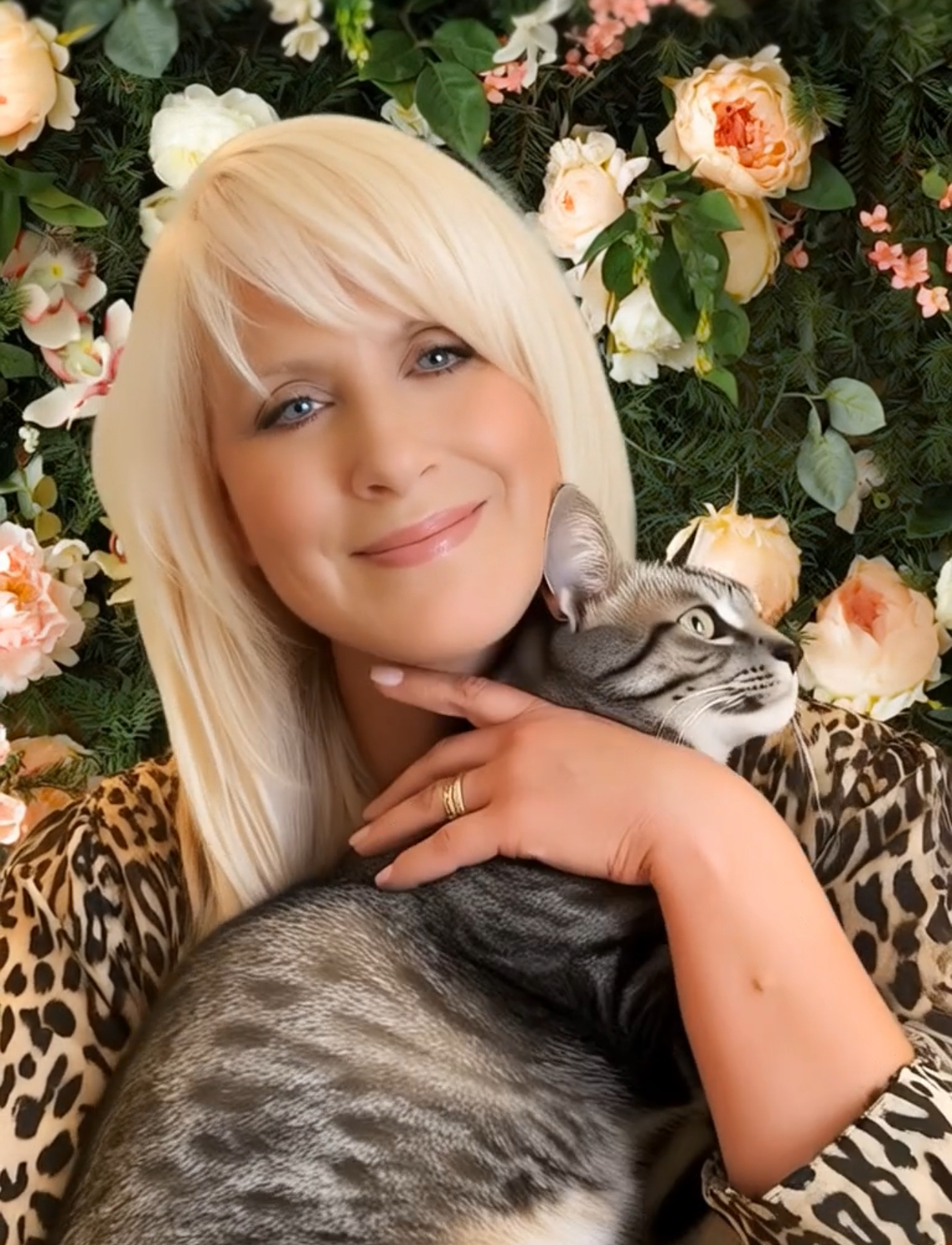






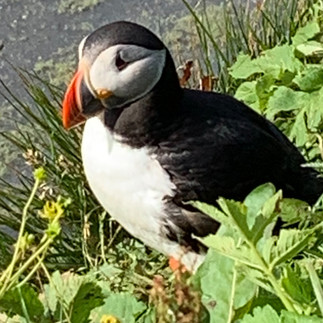






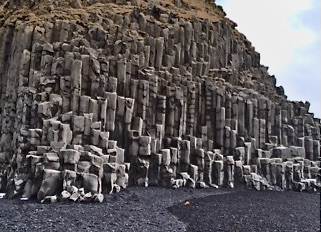



































































































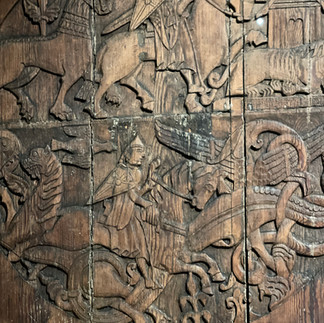













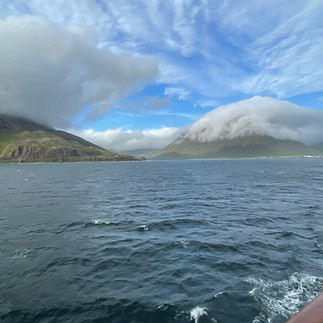































































































































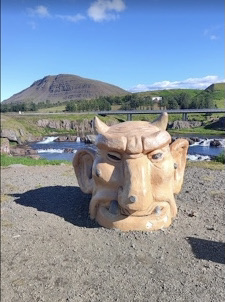




Comments